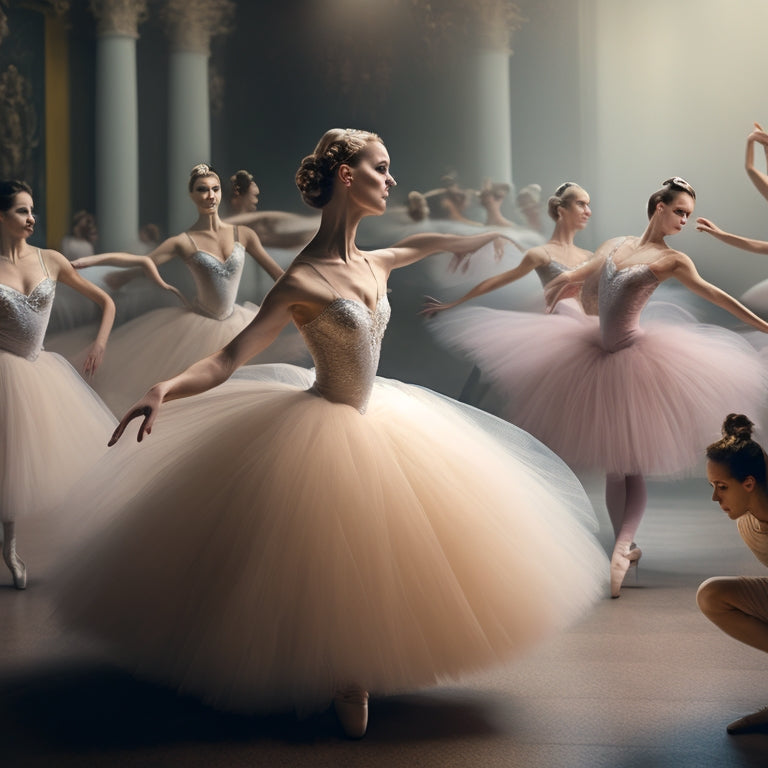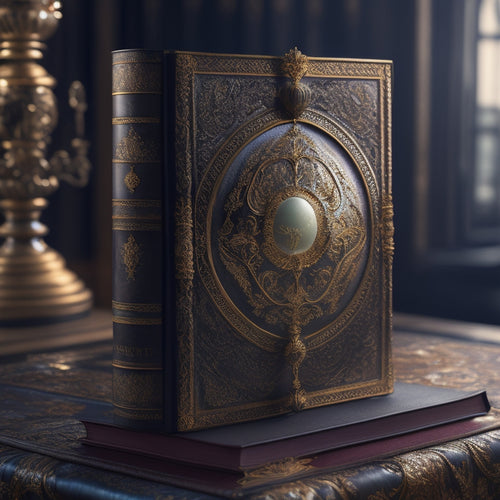
Unique Insights Into Degas' Ballet Masterpieces
Share
Degas' fascination with ballet spanned over four decades, driven by a desire to reveal the unseen aspects of the ballet world, particularly in the offstage moments of dancers. His artworks, such as 'Dancers' (c. 1896), capture the subtle nuances of human interaction, conveying the quiet drama and intimacy of the ballet wings. Through innovative techniques like pastel layering and charcoal outlining, Degas masterfully conveys the vibrant, soft palette and textures of the backstage world. As we explore further, the intricate connections between Degas' inspiration, techniques, and artistic vision come into sharper focus, revealing the intricate beauty of his ballet masterpieces.
Key Takeaways
• Degas' fascination with ballet spanned four decades, focusing on private, offstage moments and subtle nuances of movement and emotion.
• He achieved opacity and transparency through pastel layering, conveying sense of movement and energy through hidden connections.
• His works offered a glimpse into the private lives of ballet dancers, revealing subtleties of human interaction and quiet drama.
• Degas' masterful techniques, including charcoal outlines and tracing paper, allowed for subtle texture and nuance in his artworks.
• His ballet masterpieces blurred boundaries between performance and reality, inviting viewers into the quiet, intimate world of ballet dancers.
Unveiling Degas' Ballet Inspiration
Degas' fascination with the ballet, which spanned over four decades, was fueled by his captivation with the dancers' private, offstage moments, as exemplified in 'Dancers' (c. 1896), where he masterfully captured the subtle nuances of movement and emotion.
This fascination stemmed from his desire to disclose the unseen aspects of the ballet world, going beyond the grandeur of the performances to reveal the quiet intensity of the dancers' preparations. Degas' ballet inspiration was deeply rooted in his appreciation for the behind-the-scenes moments, where the dancers' true personalities shone through.
Masterful Techniques and Innovations
Through his innovative use of pastel techniques, Degas achieved a remarkable level of opacity and transparency in 'Dancers,' exemplifying his mastery of layering colors to evoke a sense of softness and fragility. His pastel layering techniques allowed for a unique blend of vibrant colors, creating a sense of depth and dimensionality. This is evident in the subtle, hidden connections between the dancers, conveying a sense of movement and energy.
| Technique | Description |
|---|---|
| Pastel layering | Achieves opacity and transparency |
| Hidden connections | Conveys sense of movement and energy |
| Color blending | Creates vibrant, soft palette |
| Charcoal outlines | Defines shapes and forms |
| Tracing paper | Allows for subtle texture and nuance |
Degas' innovative techniques not only showcase his mastery of pastel but also reveal his deep understanding of color, texture, and composition.
Private Moments in Ballet Wings
Capturing intimate moments of ballet dancers in the wings, Degas' artwork offers a glimpse into the private lives of these performers, revealing the subtleties of human interaction and the quiet drama that unfolds behind the scenes.
In these private moments, Degas masterfully conveys the subtle nuances of human connection, capturing the tender gestures and intimate interactions between dancers.
The soft, feathery textures of pastel colors evoke a sense of backstage beauty, as if the viewer has stumbled upon a hidden world of elegance and refinement.
Through his artwork, Degas invites us to step into the quiet, intimate world of ballet dancers, where the boundaries between performance and reality blur, and the beauty of human connection takes center stage.
Frequently Asked Questions
What Is the Exact Year of Degas' "Dancers" Artwork?
What secrets lie behind the delicate strokes of Degas' brush? The exact year of 'Dancers' is circa 1896, a hallmark of French Impressionism, showcasing the artist's mastery of artistic nuances in capturing the essence of ballet.
Can I Use Degas' Artwork for Commercial Purposes?
As Degas' "Dancers" is in the public domain, it is not protected by copyright laws, allowing for unrestricted commercial use, modification, and distribution without seeking permission or paying royalties.
How Many Ballet-Related Artworks Did Degas Create?
Edgar Degas' artistic evolution was greatly influenced by ballet inspiration, culminating in the creation of over 1,000 ballet-related artworks, showcasing his fascination with private, offstage moments and innovative techniques.
Is the "Dancers" Artwork Currently on Display?
The "Dancers" artwork is not currently on display, as it is listed as "Not on view" in the museum's collection, likely undergoing art conservation or awaiting museum acquisition for future exhibitions, ensuring its preservation for public enjoyment.
How Many Paper Sheets Did Degas Connect to Create the Artwork?
Coincidentally, Degas' artistic vision seamlessly merged with his paper craft, as he connected six irregularly shaped paper sheets to create the "Dancers" artwork, exemplifying his innovative approach to artistic expression.
Related Posts
-

Why Online Dance Makeup Courses Are a Game-Changer
You're about to reveal the secret to elevating your dance makeup artistry! Online dance makeup courses have revolutio...
-

Why Digital Solutions Are a Game-Changer
By integrating digital solutions into your operations, you can revolutionize your workflows, discover new revenue str...
-

The King Manual: Your Ultimate Knowledge Companion
The King Manual: Your Ultimate Knowledge Companion is an all-encompassing resource that opens up the power of knowled...


